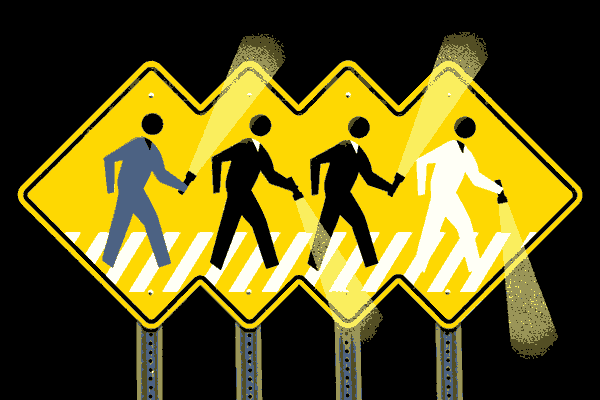We’re all pedestrians at some point, which means we all learn the same basic rules for crossing the street—look both ways, obey traffic signals and stay inside the crosswalk. Of course, technology and busier lifestyles have led to some new distractions, which mean navigating intersections requires a new level of alertness—especially when you’re on foot.
In fact, traffic accidents involving pedestrians are startlingly common: In 2015, pedestrian fatalities hit a seven-year high, with 2,368 people killed in the first six months of the year, compared with 2,232 during the same period in 2014, according to the Governors Highway Safety Association. Disregarding basic rules of the road for even a brief moment in busy, high-traffic areas can make you vulnerable to accidents.
While drivers remain responsible for looking out for pedestrians and keeping driving distractions at bay, these reminders for pedestrians could help you stay safe even when you’re not behind the wheel.
Stop Strolling and Texting
We often hear how cell phone use impairs drivers, but distracted use of smartphones by pedestrians directly contributes to accidents as well. In 2010, about 1,500 pedestrians were treated for emergency room accidents related to using their cell phones, according to a study from the Ohio State University. What’s more, when people used their cell phones while walking, they were 61 percent more likely to veer off course (read, outside the safe zone of the crosswalk), and 13 percent more likely to overshoot a target that researchers placed on the floor a few meters in front of them, which could easily have been a curb or stairway, finds one study. Put away your phone while walking, especially when crossing an intersection.
Walk in the Light
Most pedestrian traffic deaths occur in urban areas, in non-intersection locations, and at night, according to the National Highway Traffic Safety Administration. If you must walk at night, one solution is to amplify your presence. This incudes wearing light-colored clothing, reflective gear, and repurposing a smartphone as a flashlight, suggests Doug Hecox of the Federal Highway Administration. “Brightly colored clothing is helpful, but clothing with reflective materials or even clip-on light beacons, which are widely available, can help you stay visible to drivers,” says Hecox.
Stay in the Safe Zones
Sidewalks are safest. However, “there are many areas without sidewalks, and staying out of the roadway is a great rule of thumb for pedestrians. It isn’t always possible, which is why it is important for pedestrians to be mindful of their surroundings and to look out for drivers who may not see them. Darting out across the street from between cars is also unwise,” says Hecox.
In some cases, such as when walking with school-age children, taking a safe route, or a path with well-maintained infrastructure, designated walking lanes, good lighting and reduced speed limits, may be the best bet. Schools and local traffic organizations often map out safe routes, and there are even apps that allow pedestrians of all ages to determine the best walking routes. Bottom line: Countless accidents occur when pedestrians walk in undesignated areas, jaywalk, cross against the flow of traffic and otherwise use unsafe areas. Given the uptick in accidents in recent years, it’s risky to assume that drivers will always stop, and more pedestrians have died on roads or at intersections where there were no crosswalks.
No matter how you get to your destination, staying mindful is a must. “Pedestrians and drivers each have a responsibility to each other to be actively looking out for each other,” says Hecox.
“Personal safety is the responsibility of everyone.”

Leave a Reply